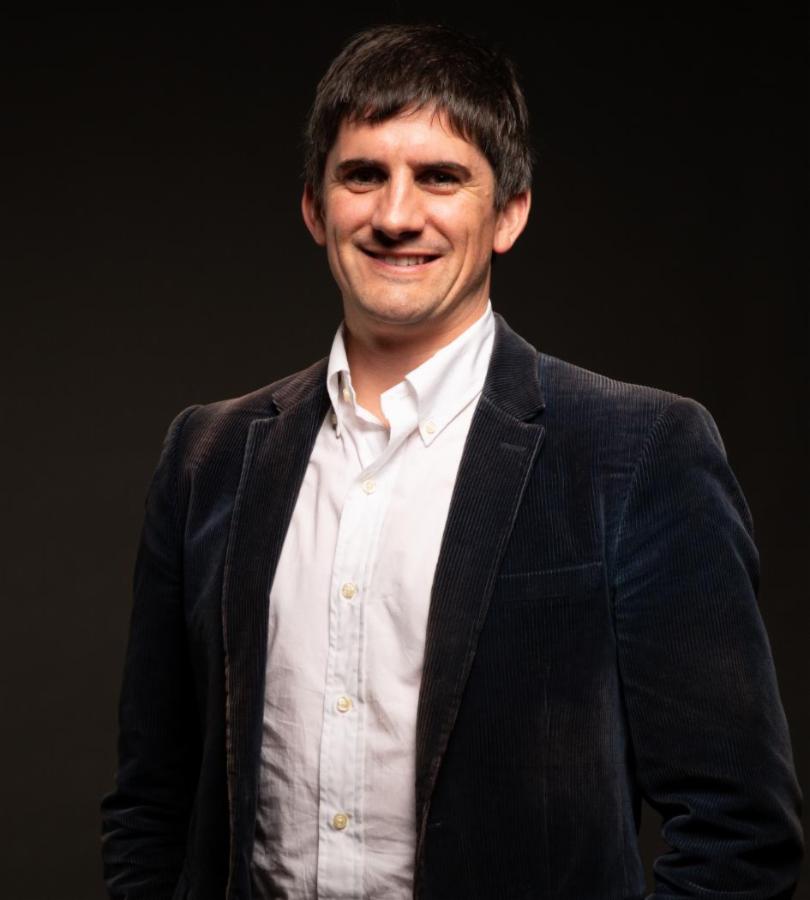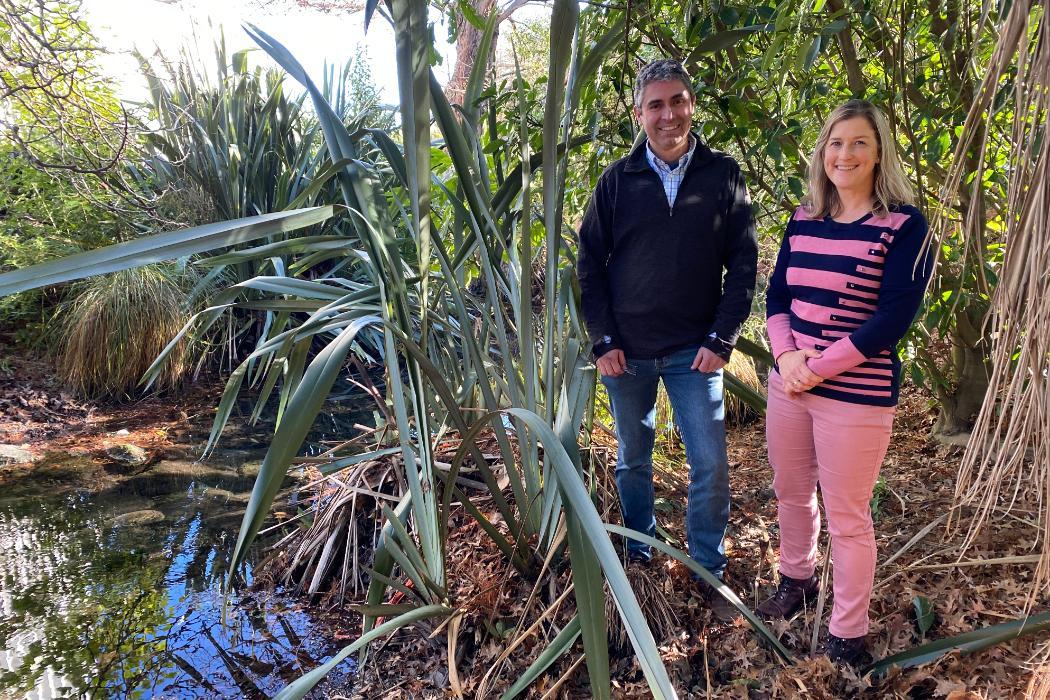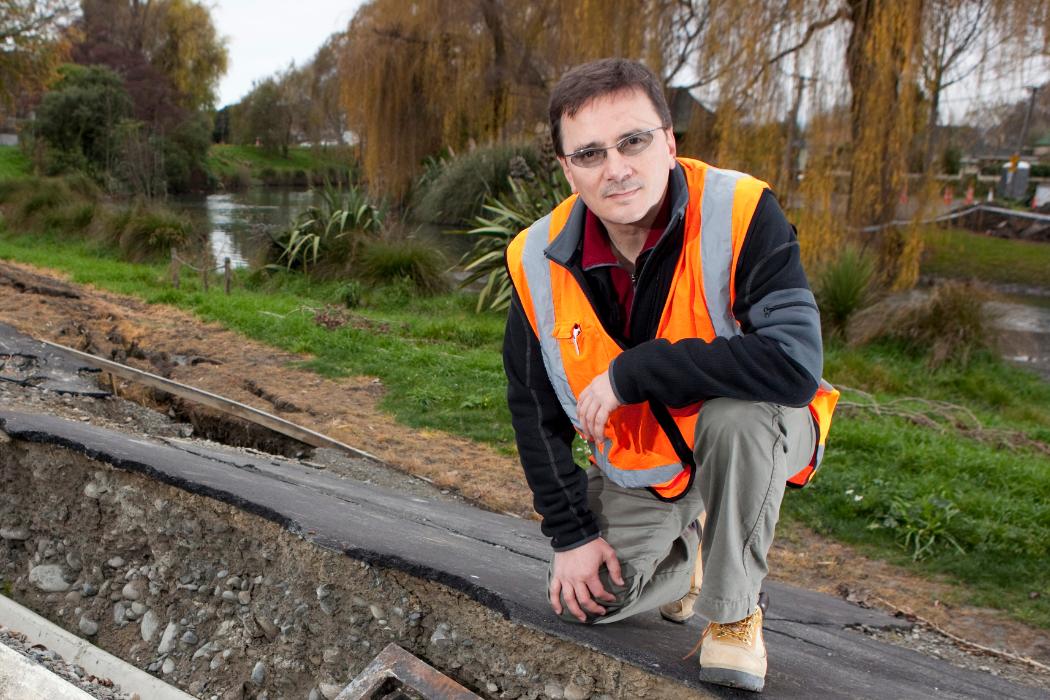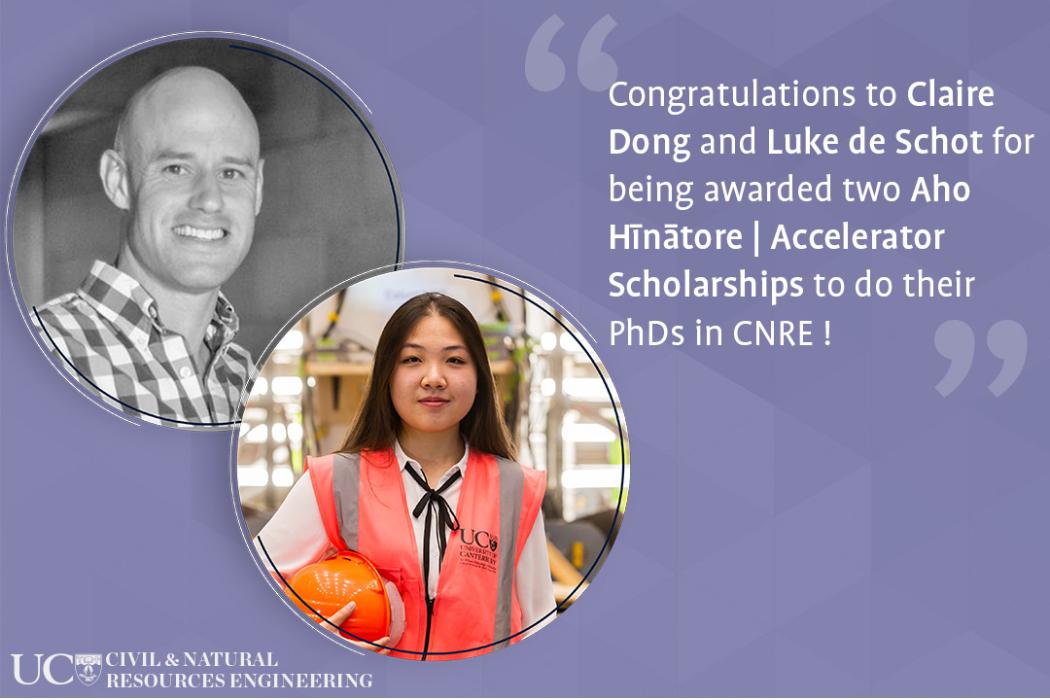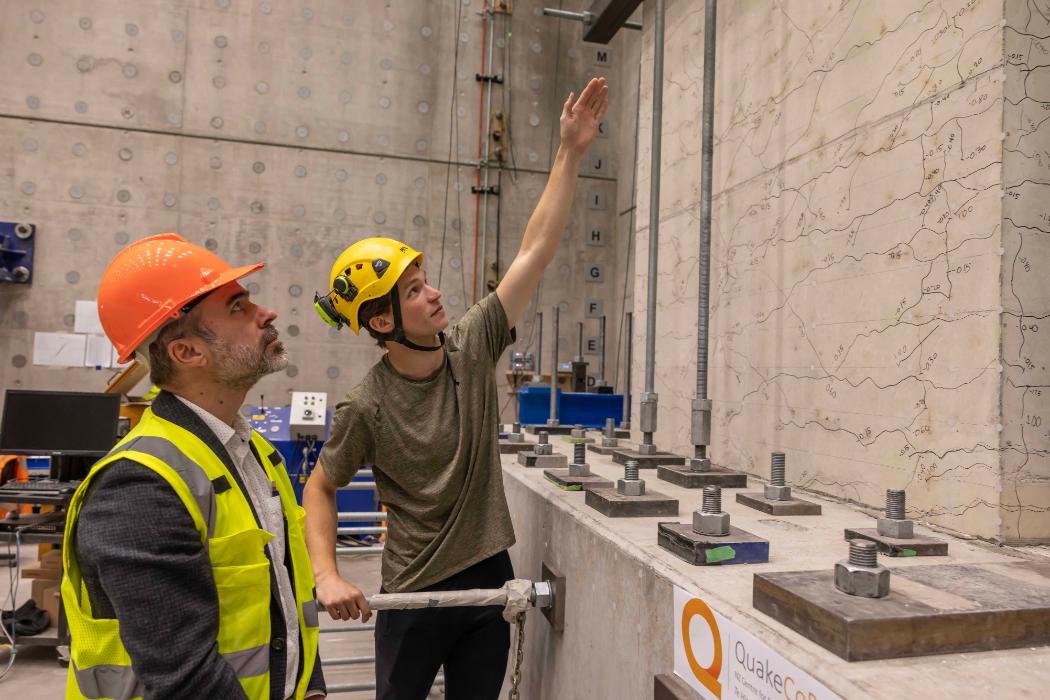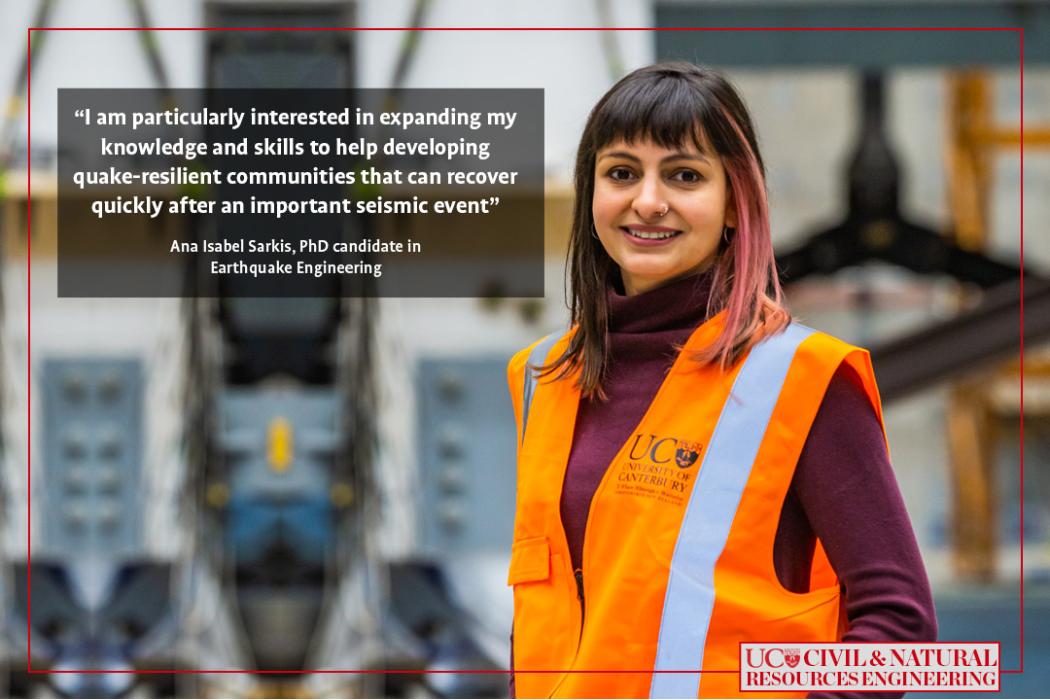The departmental Structural Engineering research laboratories are the largest and best-equipped in New Zealand. The labs permit a large range of static and dynamic testing. Besides research, the main structural engineering laboratory is used for demonstrating behaviour of various structural systems to undergraduate students complementing the knowledge they gather in theory classes
Major laboratory breakthroughs
- 1960's - Mechanism of shear resistance in reinforced concrete beams (Fenwick and Paulay)
- 1970's - Diagonally reinforced coupling beams (Paulay)
- 1980's - Strength and deformation of reinforced concrete structures (Park, Paulay and Priestley)
- 1990's - Precast floors in seismic structures (Bull)
- 2000's - Refinement of practical and usable damage free structural systems
Main Structural Laboratory
The main laboratory comprises two large prestressed concrete strong floors (104 m2 and 28.7 m2) for structural testing. It is serviced by a 7.5-ton overhead crane. Laboratory equipment includes:
- 10 MN Dartec Universal Testing Machine
- Hydraulic actuators with capacity up to ±2000 kN, and strokes of ±200 mm
- 1000 kN Avery Universal Testing
- 100 kN Avery Universal Testing Machine
- 2500 kN Avery Block Testing Machine
- Uniaxial 8 m2 shaking table with maximum displacement ±150 mm, maximum velocity ±100 cm/sec, maximum acceleration ±1 g, and loading mass 200 kN.
The laboratory is well equipped with movable reaction frames and measuring devices which include load cells, accelerometers, LVDTs and potentiometers. A number of digital controllers and data acquisition units are also available.
Structural Extension Laboratory
UC structural extension labThe extension wing is specifically for large scale testing. It has a 97.5 m2 strong floor and is serviced by a 7.5-ton overhead crane. The laboratory can accommodate two-story specimens with a maximum floor area of 50 m2.
Concrete Material Laboratory
The concrete material laboratory is a specialized extension of the structural laboratory for research on cementitious construction material. The laboratory is currently being enlarged and updated.


